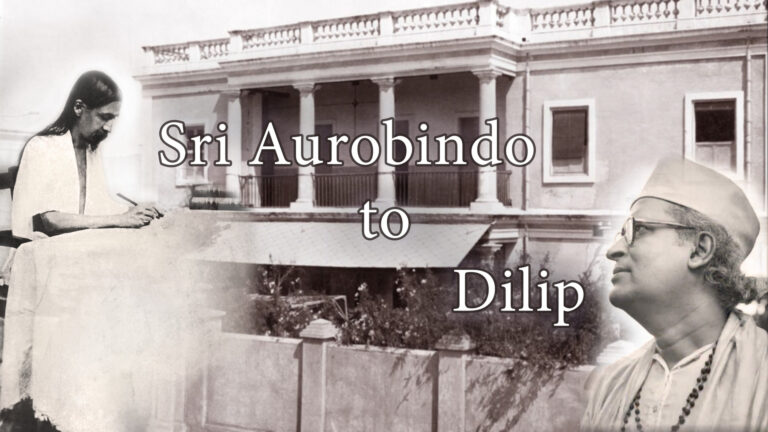
A brief Note on Sri Aurobindo’s Savitri
Sri Aurobindo
Yogi, Poet, Prophet, Revolutionary, Sri Aurobindo revolutionalised spiritual thought by envisaging the possibility of a Divine Life in a Divine Body through the progressive transformation of the human race. He not only gave the promise and assurance of earth’s luminous future, but showed the path that man must take to realise this possibility.
The Mother
The Mother (also known as Mirra Alfassa) was already an adept in the Buddhist yoga, the Yoga of the Gita, The Rajayoga and Kundalini Yoga before meeting Sri Aurobindo. A Master in spiritual and occult domains, Her yoga was already moving towards a grand synthesis of the Divine Consciousness and the earthly Life before meeting Sri Aurobindo. Together they started developing this new yoga for earth and man called the Integral yoga, that would eventually lead man, the mental being, to evolve into a supramental being just as man evolved out of the ape.
Works of Sri Aurobindo
Sri Aurobindo wrote a number of books elucidating and elaborating in great detail his vision and work. Notable among these are The Life Divine, The Synthesis of Yoga, The Human Cycle, Essays on the Gita, The Secret of the Veda, Letters on Yoga and Savitri, beside many others. These books serve as luminous guides that mark the further stages of human evolution that are yet to emerge and the conscious processes through which we can participate in this further spiritual and supramental evolution upon earth.
Savitri
Sri Aurobindo considered Savitri as his most important work. It stands as the longest epic poem in English, with nearly 24000 lines spread out in Eleven Books and an Epilogue. He worked on it for decades to infuse into it the highest mantric vibrations so that Savitri the poem could serve as a bridge between man’s present state and the supramental consciousness. The Mother further confirmed it and by reading it has further added to its mantric quality. She has categorically stated that ‘Savitri is the mantra of transformation’. In this respect it can be seen not only as a supreme mystic poetry but, along the lines of Vedas and the Upanishads, it is a mantric poem.
Given the fact that Sri Aurobindo in his personal yoga reached much farther and wider beyond what had ever been realized, the power of Savitri embodying his consciousness also carries with it the power to uplift the human consciousness much farther than any such previous works. While of course it can be said that this is a matter of individual faith, but it is a faith that is justified by the experience of many who have been drawn to the magic of Savitri and dwelt in its atmosphere.
One can say without the least exaggeration that a mere reading of Savitri is to engage in the yoga of transformation. Its effect upon the inner being as well as on the body itself continues even after the reading is over. Those who have made Savitri an important means for their own yoga find that Savitri alone is sufficient to carry the human consciousness on the path of ascension without the need or help of any other guide.
Receiving Savitri
First and foremost, it is important to understand that Savitri is not just another literary work that one needs to grasp with the analytical mind. In fact, it will only fail since the poem itself has been born as a supreme revelation and hence it is not possible for the analytical mind with its limited experiences to grasp even its outer images.
However, when read with an opening of the heart, in a state of inner quietude and receptivity, then its meaning begins to be revealed in some deeper layer of our being. We begin to become aware of the deeper realities and the states of consciousness through which Savitri climbs towards the very highest regions of our being. It takes us eventually to the grand culmination in the beatific divine vision of the Divine Mother and the Supreme and closes with the boon that Sri Aurobindo’s tapasya and the Mother’s Grace have brought to earth and man.
But to receive these divine boons rightly man’s consciousness must also be ready. Savitri itself is a means to prepare our consciousness to open to and receive the transformative Divine Influx into ourselves.
Most of all enjoy Savitri. It is Sri Aurobindo’s gift of Love to the world. Read it from the heart with love and gratitude as companions, and drown in its fiery bliss. That is the true understanding rather than one that comes by a constant churning of words in the head.
When to read
There is no auspicious hour to come in contact with the Divine, or rather whenever we feel or experience the contact with the Divine Reality, that very moment becomes an auspicious moment even if it be outwardly a moment of great crisis in our life!
Still it is always good and helpful to fix a time that works for an individual. It is our personal time with the Lord. One can always take out some time for the reading, even if it be late at night when one is done with all the daily works.
Of course, as with meditation, – and reading Savitri is itself a meditation, – a certain receptivity is needed. If one is too tired or the reading becomes too mechanical as a ritual routine to be somehow finished it tends to be less effective, hence the advice is to read in a quiet receptive state.
How much to read
As to the pace of reading it is best to slowly build up and keep it steady. To read a page or a passage daily is better than reading many pages once and then none for days. This brings a certain discipline in the consciousness which makes one receptive. What it means is that one should fix up reading a few passages or a page or two daily, and then if an odd day one is enjoying and spontaneously wants to read more, one can go by the inspiration of the moment.
Reading the whole or in parts
It is best to read at least once from cover to cover. However, if one is not feeling inclined or rather is not yet ready for that, one can read some of the beautiful cantos and passages whose reference one can find in various places. This helps us familiarise with the epic and the style of poetry.
Later one can go for the cover to cover reading. For those who take up Savitri as a sadhana, the reading never really finishes with one or even a few readings. Once Savitri begins to sink within, one notices that its mantric lines continue sometimes even in sleep and spring up as if from some unknown depths whenever one needs a help or a guidance.
Reading aloud or silently
One can read it silently. Loud reading is needed only if one is unable to focus with silent reading. A mantra is more potent when read subtly. I am aware that some people recommend reading it aloud, which is fine if that helps one better. A certain flexibility in these things is always good.
After a while the rhythm develops from within, however those who would wish to know the rhythm, it is best to simply listen to the Mother’s readings of Savitri. She has read many lines which have been fortunately recorded and are freely available now.
It has been found that merely playing these readings has a tremendous effect on the atmosphere in driving away much that is dark and obscure, and opening up the physical and psychological spaces to the vibrations of the supreme Light embodied in Savitri as a sound-body.
Writing and Reflecting
One can also write some of the beautiful passages with which one feels suddenly connected. It is a help in the yoga since such a writing involves the pouring in of the consciousness of Savitri through the brain and nerves and the hand.
Reflecting and meditating upon some of these magnificent lines and passages while one is engaged in one’s daily activities helps to create a background state for our inner being. It also helps us to get absorbed more and more in the luminous vibrations of Savitri.
Understanding Savitri
It is helpful if a brief background about each Canto is known. This allows the mind to focus and also to keep in sync with the overall scene and sense of what is being read.
But it is best not to keep referring to the dictionary while reading. Let the overall sense emerge. Specifics can be done during a detailed reading later and or may not be necessary at all. Besides, the sense that Sri Aurobindo has given to many words may not be accurately conveyed by the standard dictionaries. A certain plasticity is required to understand the subtle suggestions hinted at by the Master-poet.
In this sense Savitri is in the line of Vedic poetry, using images that are at once profound as well as commonplace. That is the beauty of mystic poetry. These are things actually experienced and seen by Sri Aurobindo, and ultimately it is Their Grace that alone can reveal the intrinsic sense of this supreme revelation of the Supreme.
This text earlier appeared on the Facebook page of AUROMAA, and has been expanded for publication at this website.



About Savitri | B1C1-10 The Response of Earth (p.5)